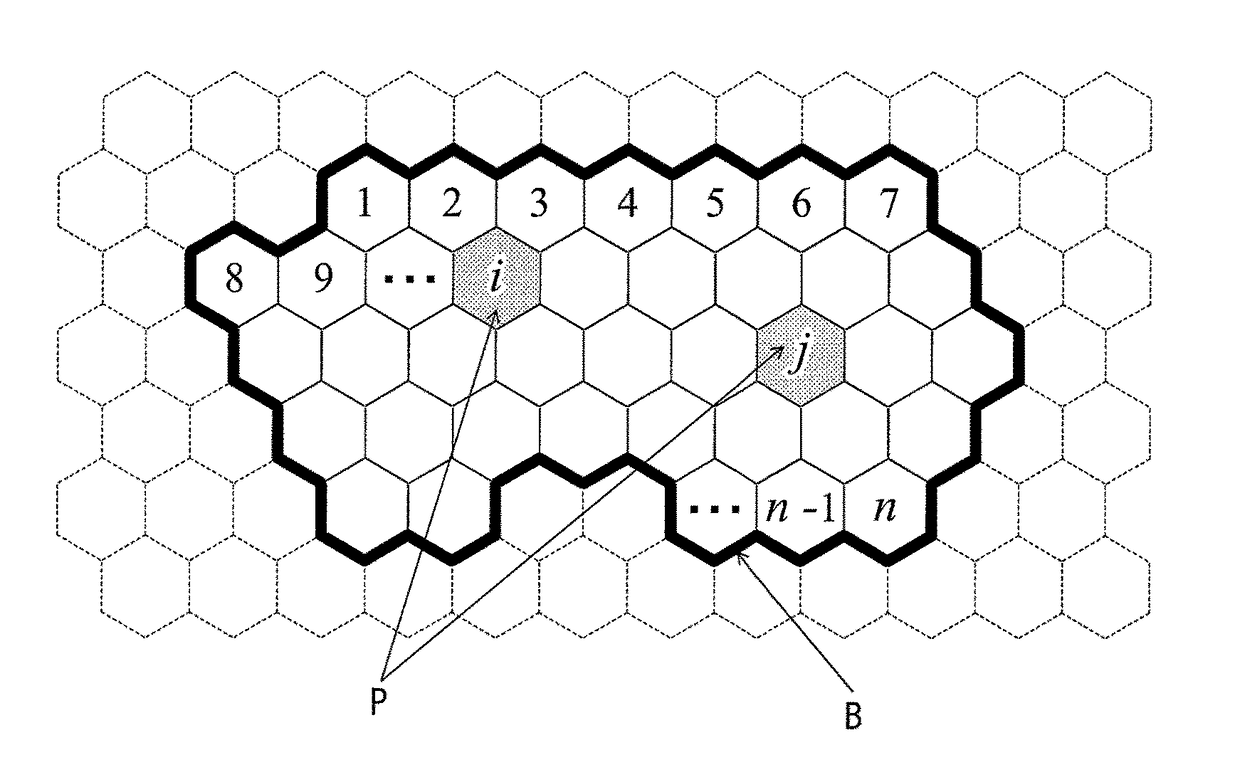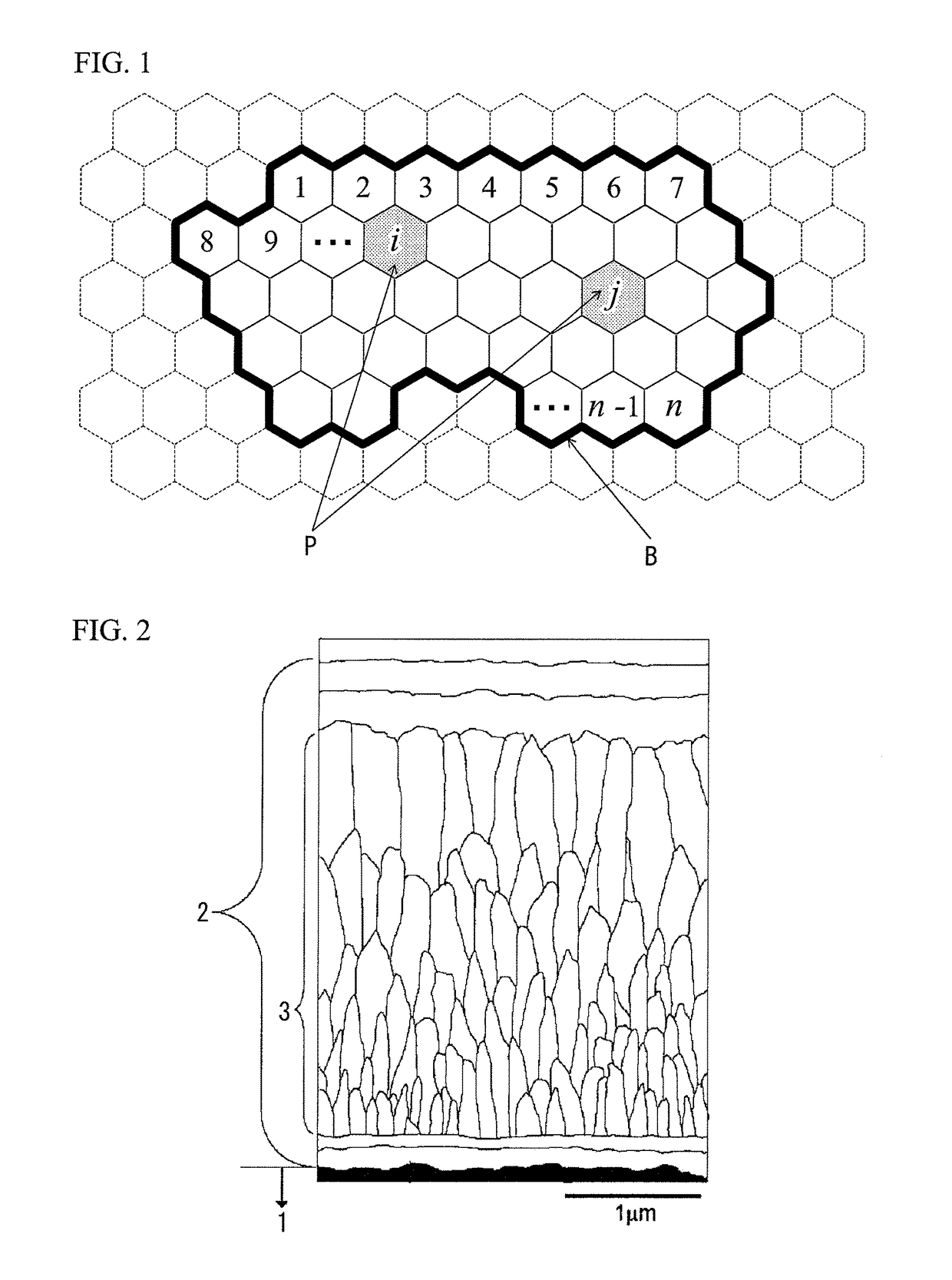Surface-coated cutting tool having hard coating layer that exhibits excellent chipping resistance
a cutting tool and hard coating technology, applied in the direction of manufacturing tools, turning machine accessories, superimposed coating process, etc., can solve the problems of poor toughness, wear resistance and chipping resistance are not necessarily sufficient, and the use of abnormal abrasions such as chipping and the like is likely to occur, so as to improve the hardness and toughness of crystal grains, improve the chipping resistance without deteriorating wear resistance, and improve the effect of hardness and toughness
- Summary
- Abstract
- Description
- Claims
- Application Information
AI Technical Summary
Benefits of technology
Problems solved by technology
Method used
Image
Examples
example 1
[0072]First, as raw material powders, the WC powder, the TiC powder, the TaC powder, the NbC powder, the Cr3C2 powder, and the Co powder, all of which had the average grain sizes of 1-3 μm, were prepared. Then, these raw material powders were blended in the blending composition shown in Table 1. Then, wax was added to the blended mixture, and further mixed in acetone for 24 hours with a ball mill. After drying under reduced pressure, the mixtures were press-molded into green compacts with a predetermined shape under pressure of 98 MPa. Then, the obtained green compacts were sintered in vacuum in the condition of 5 Pa vacuum at the predetermined temperature in the range of 1370-1470° C. for 1 hour retention. After sintering, the tool bodies A-C, which had the insert-shape defined by ISO-SEEN1203AFSN and made of WC-based cemented carbide, were produced.
[0073]In addition, as raw material powders, the TiCN powder (TiC / TiN=50 / 50 in mass ratio), the Mo2C powder, the ZrC powder, the NbC po...
example 2
[0098]First, as raw material powders, the WC powder, the TiC powder, the ZrC powder, the TaC powder, the NbC powder, the Cr3C2 powder, the TiN powder, and the Co powder, all of which had the average grain sizes of 1-3 μm, were prepared. Then, these raw material powders were blended in the blending composition shown in Table 10. Then, wax was added to the blended mixture, and further mixed in acetone for 24 hours with a ball mill. After drying under reduced pressure, the mixtures were press-molded into green compacts with a predetermined shape under pressure of 98 MPa. Then, the obtained green compacts were sintered in vacuum in the condition of 5 Pa vacuum at the predetermined temperature in the range of 1370-1470° C. for 1 hour retention. After sintering, by performing honing work of R: 0.07 mm on their cutting edge parts, the tool bodies α-γ, which had the insert-shape defined by ISO-CNMG120412 and made of WC-based cemented carbide, were produced.
[0099]In addition, as raw material...
example 3
[0126]First, as raw material powders, the cBN powder, the TiN powder, the TiC powder, the Al powder, and the Al2O3 powder, all of which had the average grain sizes of 0.5-4 μm, were prepared. Then, these raw material powders were blended in the blending composition shown in Table 16. Then, the blended mixtures were wet-mixed for 80 hours with a ball mill. After drying, the mixtures were press-molded into green compacts having the dimension of: 50 mm of the diameter and 1.5 mm of the thickness under pressure of 120 MPa. Then, the obtained green compacts were sintered in vacuum in the condition of 1 Pa vacuum at the predetermined temperature in the range of 900−1300° C. for 60 minutes retention to obtain preliminary sintered bodies for the cutting edge pieces. The obtained preliminary sintered bodies were placed on separately prepared supporting pieces made of WC-based cemented carbide, which had the composition of: 8 mass % of Co; and the WC balance, and the dimension of: 50 mm of th...
PUM
| Property | Measurement | Unit |
|---|---|---|
| thickness | aaaaa | aaaaa |
| average grain width | aaaaa | aaaaa |
| thickness | aaaaa | aaaaa |
Abstract
Description
Claims
Application Information
 Login to View More
Login to View More - R&D
- Intellectual Property
- Life Sciences
- Materials
- Tech Scout
- Unparalleled Data Quality
- Higher Quality Content
- 60% Fewer Hallucinations
Browse by: Latest US Patents, China's latest patents, Technical Efficacy Thesaurus, Application Domain, Technology Topic, Popular Technical Reports.
© 2025 PatSnap. All rights reserved.Legal|Privacy policy|Modern Slavery Act Transparency Statement|Sitemap|About US| Contact US: help@patsnap.com



